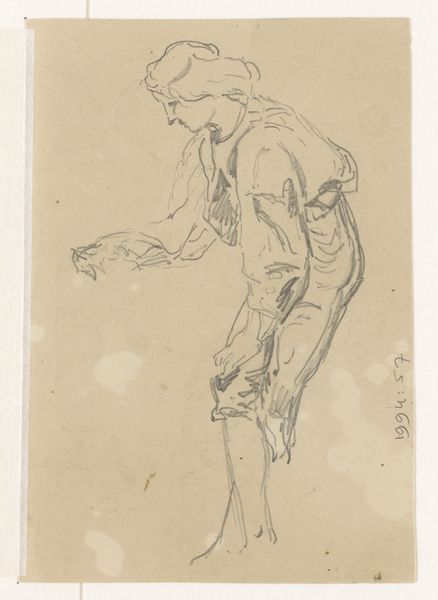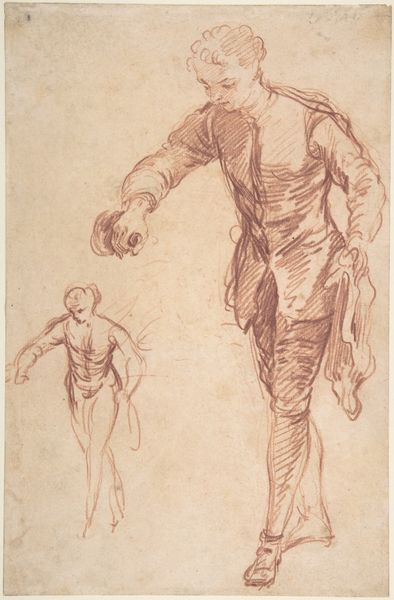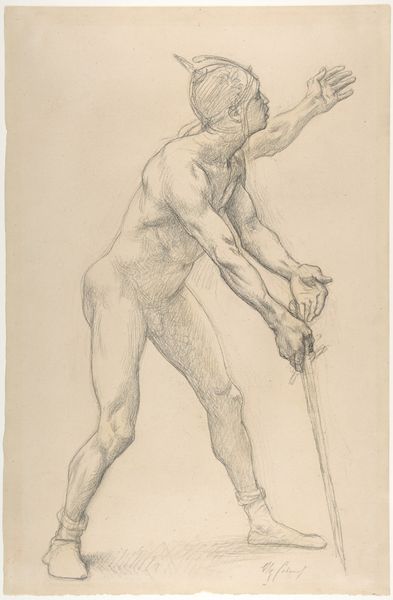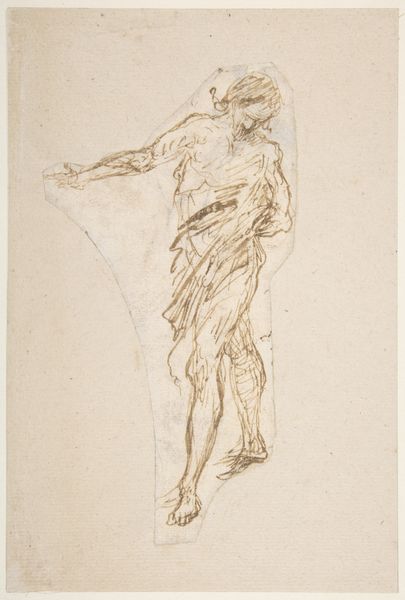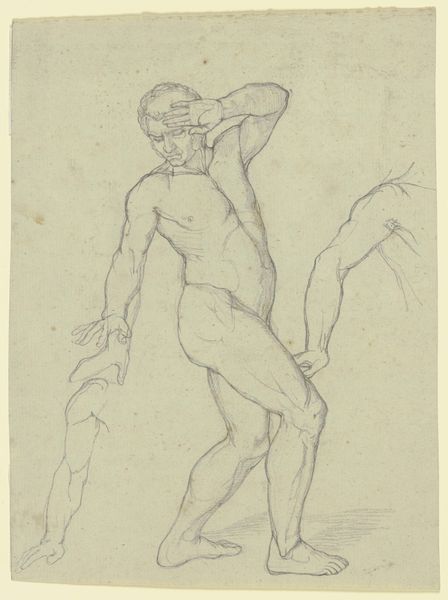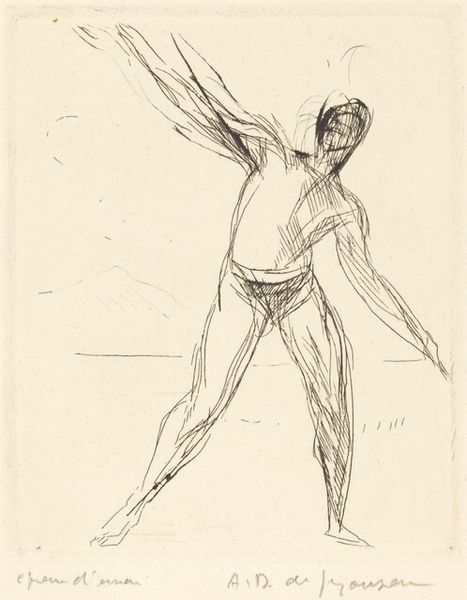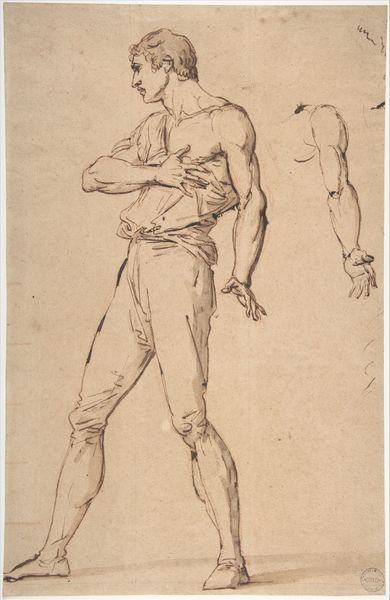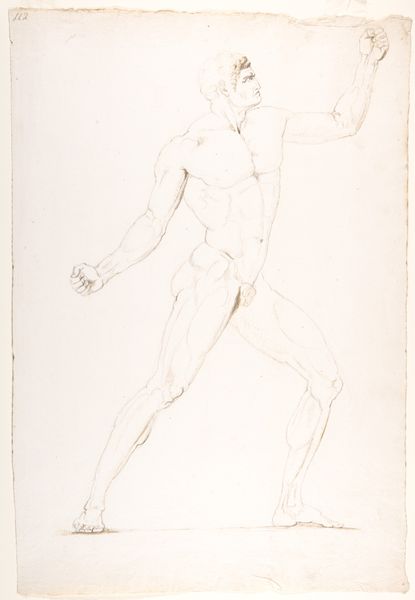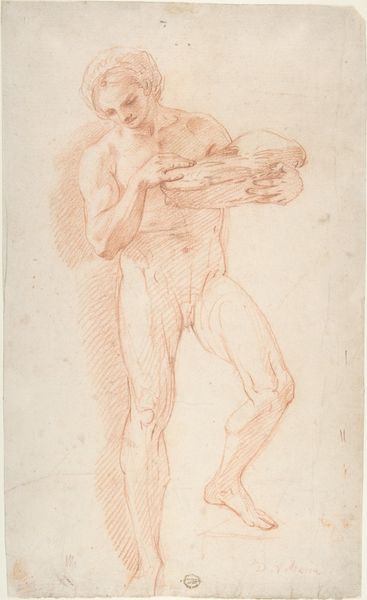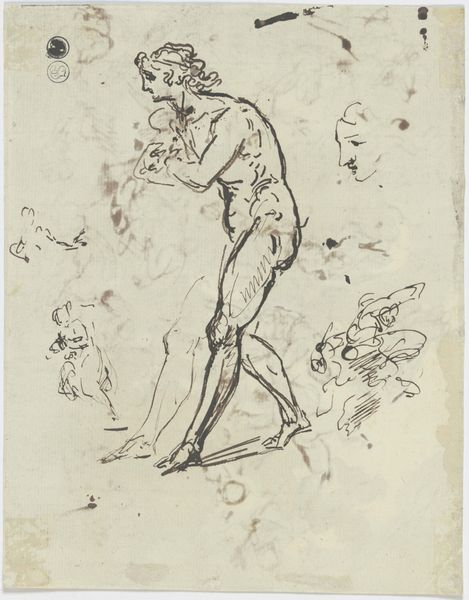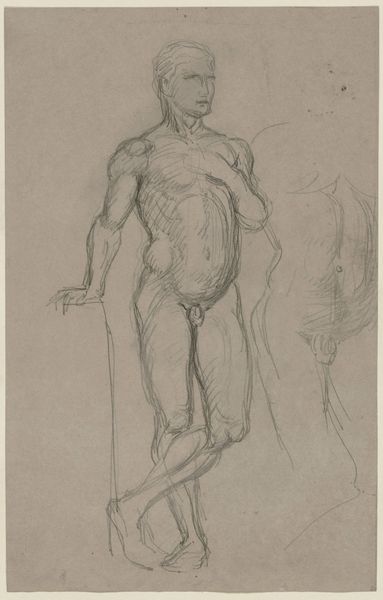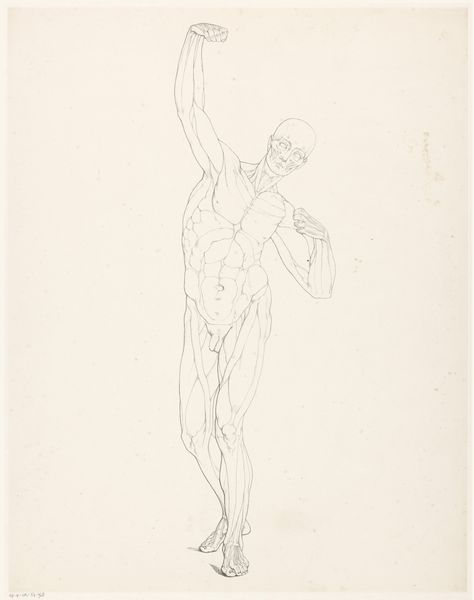
drawing, ink
#
drawing
#
baroque
#
figuration
#
ink
#
genre-painting
#
history-painting
Copyright: Public Domain
Editor: Here we have "Beggar with two crutches" by Jacques Callot, held at the Städel Museum. It's an ink drawing that feels both Baroque in its drama, but almost sketch-like in its quickness. There’s something almost unsettling in how exposed the figure is, his musculature almost raw. What strikes you most about this drawing? Curator: Raw is such an apt word for it. Callot's beggars are never romanticized, are they? This drawing feels like a punch to the gut. The lines, almost frantic, map the hard topography of poverty onto the beggar’s very skin, doesn't it? It’s visceral, almost like an anatomical study of hardship itself. Do you find yourself focusing on the detail or the overall impression? Editor: I think both are striking in different ways. The quick details of his face draw me in, but then the overall image is undeniably one of struggle. The figure is just *there*, exposed with all its burden, without frills. I'm curious though – why beggars? What do they signify here? Curator: I think for Callot and his audience, beggars represent a society fraying at the edges, a moral mirror reflecting anxieties about wealth and poverty. This was a period of war, famine, and stark inequality, so images of the marginalized held a powerful, often uncomfortable, truth. Do you see it as a commentary or a detached observation? Editor: That's a great question. I initially read it as observational. But given the historical context you describe, I now lean toward social commentary. It seems impossible for an image this visceral to *not* carry a message. Curator: Absolutely. It’s in those scratchy lines, isn’t it? They almost shout. It's a drawing that doesn’t let you look away. And that's its power. Editor: Yes, definitely a new layer revealed to me, thank you!
Comments
No comments
Be the first to comment and join the conversation on the ultimate creative platform.
